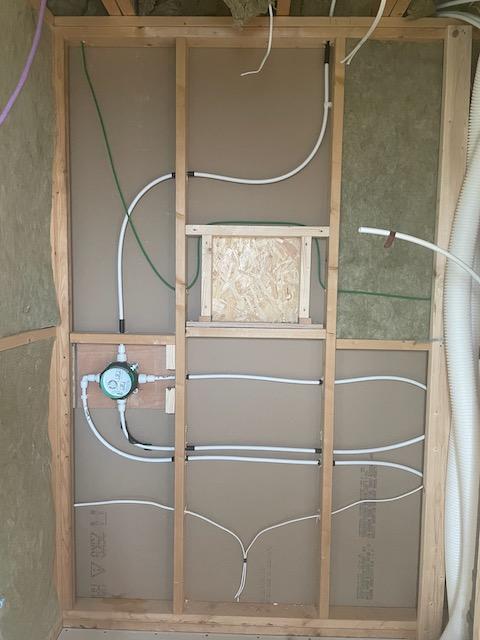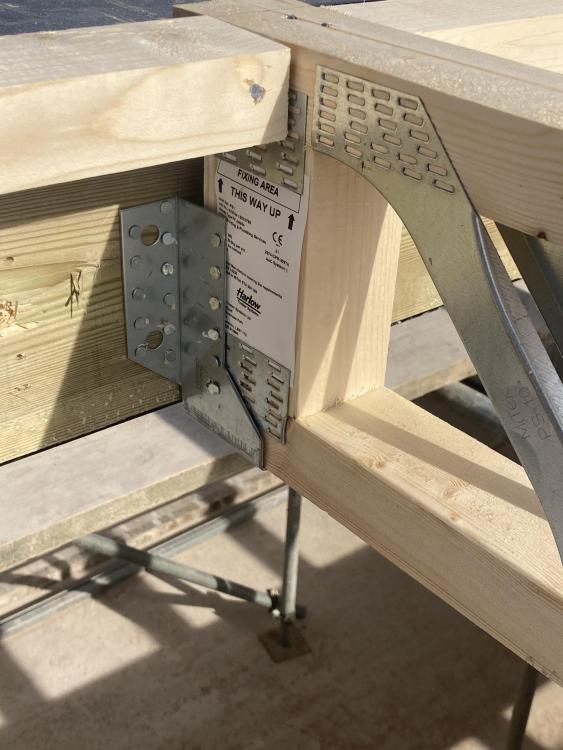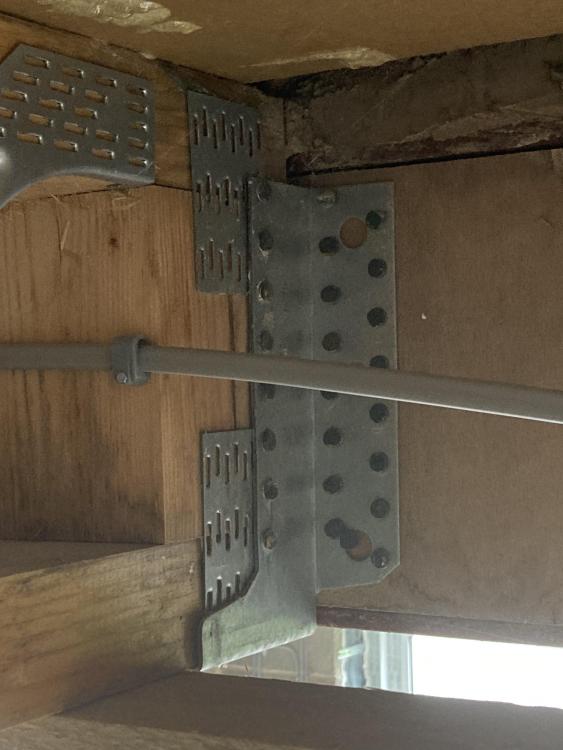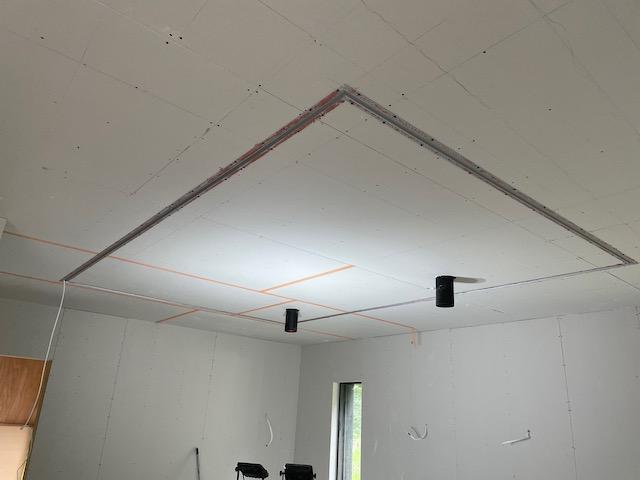Leaderboard
Popular Content
Showing content with the highest reputation on 10/08/23 in all areas
-
I fitted one iBox with hep2o and was very joyous when I tested it and it looked dry! sadly that didn't last and I found a small weeping leak. this is due to the fact that my adjustable wrench is rather fat and so I couldn't tighten it any further. so I have ordered a slim adjustable wrench which will allow me to tighten all the connections up. still, thought I'd post a photo of how it looks anyway.3 points
-
3 points
-
3 points
-
“The reason for the two washers is to cover all types of tap tails, some have a square end (flat washer) others have a tapered internal bore (tapered washer).”2 points
-
Yep it seems like that but .... I had sent hime the joist drawings 2 weeks ago and also the sizes of the web of the steels. This is where he noted that the timbers would need packing out and suggested 12.5 mm ply to do this. He said he was going to place the ply behind the timber which seemed fine to me providing it was the full height of the timber. Then I turned my back !2 points
-
2 points
-
Mine tried to apply a 90 metre visibility splay which would be hard to meet, until I pointed out they had approved another build in the same road with only 60 metre visibility, so they agreed to that. It does seem to be a random number generation scheme,2 points
-
Packing out behind hangers is not acceptable. Timber in the web should have been packed out or doubled to bring the face out flush with the flange or to meet the end of the posi if needed.2 points
-
That’s wrong for visibility splays. They use a specific formula for calculating the stopping sight distance. For 20mph it’s 25m. Here’s the formula: Your local council planning will have a guidance document on this. They are all generally based on the same document though. Get a copy, read it and apply it to your situation. As above don’t second guess what might happen just follow the guidelines. Just because you don’t quite meet the 25m it won’t necessarily stop you as the planning guide may well allow you to mitigate around it. This varies from council to council and will be specific to your situation.2 points
-
In my topic Modelling the "Chunk" Heating of a Passive Slab, I discussed how I used a heat flow model to predict how my MBC WarmSlab heated by UFH + Willis heater would perform. What I wanted to do in this post is to provide a “6 years on” retrospective of how the house and slab have performed as built based on actual data that I’ve logged during this period, and to provide some general conclusions. In this, I assumed 15 mm UFH pipework, but we actually used 16mm PEX-Al-PEX pipework with an internal diameter of ~13mm. At a nominal flow rate of 1 m/s, say, my three pipe loops in parallel have an aggregate flow rate of 0.4l/s or 1.4 m³/hr. At this flow, a 3kW (2.88 kW measured) heater will raise this stream temperature by 1.7 °C. However, when I commissioned the system, I found setting the Gunfoss manifold pump at a high setting (roughly equivalent to this flow rate) gave a very noticeable circulation noise in the adjacent toilet, so I tried the pump on its lower settings and found that the flow was almost inaudible on lowest one with in to return delta at the manifold still only about 5°C, so I stayed with this. The actual as measured delta for two loops of 4.9°C and the third slightly shorter loop of 4.1°C (close enough not to bother balancing the flows out). This corresponds to an actual flow nearer to 0.4 m/s or 0.56 m³/hr by volume. When scaled to adjust for this lower flow rate, the actual measured temperature profiles are pretty close to those modelled. I measured the actual Willis heater’s heat input as 2.88kW. In analysing the actual slab heating rates, I found that this raises the overall slab temperature by some 0.45 °C / hour after the initial start up. Plugging typical specific heat and density figures for the concrete, this is empirically equivalent to heating 25 tonne of concrete (Cmass = Ewillis/ΔT/SIconcrete = 2.88*3600/0.45/0.9 kg), or 10.6 m³ concrete by volume (23000/2400 m³). In the case where the Willis provides heating for the full 7 hour off-peak window (just over 20 kWh), at the end of this heating period the flow input to the slab is +9 °C above the initial slab temperature and the flow return is +4.4 °C. The temperature of the concrete immediately in contact with the pipe will follow this same gradient, with this temperature excess decaying radially away from the pipe centres. By the end of this heating window at the slab surface, there is barely a noticeable difference in the measured temperature of the floor above the out and return UFH pipe runs (perhaps 1°C). These temperatures and gradients are also comfortably within the reinforced concrete’s design parameters. As soon as the Willis is turned off, the internal temperature gradients start to flatten and any unevenness redistributed across the slab; the rebar reinforcing has a thermal conductivity 60 × that of concrete and this accelerates this, so that within an hour or so of the heating turning off, the overall slab is left about 3.1 °C warmer than at the heating start time (actually about 10% less than this, as the slab has already started to dump heat into airspace). In my original modelling topic, I mentioned that my passive slab has ~73m² of concrete 0.1m thick (~ 17½ tonne of concrete with another ~10 tonne of perimeter beams, cross bracing and steel rebar, with the UFH runs laid in 3 × ~100m long standard “doubled back” spirals (common to most UFH designs) on ~150mm centres and roughly 50 mm below the slab surface. (Actually only 75% of the slab is covered by the UFH runs, because of the need to avoid proximity to ring beams, partition walls, areas under fitted cupboard areas, etc..) Nonetheless, this empirical 25 tonne figure is still consistent with the total volumetric 27½ total estimate if we assume that the rebar is effective at spreading heat through the wider slab over this multiple hour timescale. In conclusion, based on this modelling and observation: First recall our context: our house is near passive in class with a lot of internal specific heat capacity. We only need about 1kW overall heater input in the coldest winter months to maintain overall heat balance, e.g. either by a resistive heater such as a Willis or an ASHP. IMO, there are two extreme approaches to house heating: (i) “agile” tracking of occupancy patterns so the living spaces are only heated when and where occupied; (ii) a 24×7 constant comfortable temperature everywhere within the living space. Our warm slab design is very much optimised for this second case, and our slab supplier did a good job in designing an UFH layout to match the slab characteristics to this The slab is covered in “doubled back” spirals with each loop using up a full 100m roll spaced on roughly 150 - 200 centres (and avoiding partition walls and cupboarded areas) so that each heats roughly 15 - 20 m² slab. In our case three loops were enough, and there was no advantage in trying to squeeze in a fourth. Our 3 loops will happily take up 3 kW heat input. Circulation speeds between ⅓ - 1 m/s seem to work well, with the only real difference being the slower the flow speed, the higher the delta between in and return temperatures. The slab does just as its trade name suggests: it can be treated as a huge low temperature thermal store, but because of its extremely high thermal inertia, one that is not rapidly responsive to heat input. In our case, a heat input of 3 kW input will only raise the slab temperature by 1°C over a couple of hours, and radiating 1kW will drop the slab by only 1°C over roughly six hours. In a true passive class house, one key to heating economy is the high level of thermal insulation coupled with a substantial internal heat capacity. Trying to drive such a house in an agile manner is a fruitless exercise, so forget the traditional having room-specific thermostat control; forget having traditional time-of-day heat profiles. It is far easier to treat all ground-floor rooms as a single thermal zone to be kept at a roughly constant temperature. In my view, using a resistive heating approach (such as a Wills heater) as well as an ASHP can both work well. In this second case something like the 5kW Panasonic Aquarea ASHP would be a good fit as it uses a modulated inverter compressor so it can heat the slab directly without needing a buffer tank. The choice is a trade-off between running costs vs. installation costs. In our case, switching from a Willis to this type of ASHP would save me about £600 p.a, in electricity cost, so I would really need to do the install for a net £ 3-4K to make the investment case feasible. However I would like to defer this discussion to a separate thread because there are other issues that such an approach would need to address.1 point
-
1 point
-
I bedded ours on mortar 5 years ago and they are fine They are extremely heavy and unlikely to move1 point
-
ok. but not worth wasting more time undoing it and taking it off again! 😉1 point
-
Thanks everyone, I’ve decided to up the insulation to 200mm, we don’t have our current house too warm (usually about 19-20c) and will have a small room sealed log burner for the coldest of days. so the OSB holds the first layer of MWB and then it’s back to business as usual for the wall ties? Did you choose to use the basalt rods or just stainless ones?1 point
-
Ah yes. Unwise to reduce from 4” nominal. If the ground has been un-disturbed for years and everything looks sound then I think I’d not worry about it. Another viewpoint is that you may insert a liner that for some reason degrades / goes wrong and then you have the problem you were hoping to avoid.1 point
-
You can downsize to 80mm for just the run to the final plenum on each branch. Otherwise best sticking to 125mm for the rest. Also, with 125mm ducting, you don't actually need plenum boxes, just a 90⁰ bend, short length of 125mm duct and put your air valve straight on. Save you a good £20 per room.1 point
-
Pretty sure the OPs house is finished and lived infor some time. Short of ripping up the floor and spending a fortune, nothing you can do.1 point
-
As for maintenance.. Sawn timber cladding painted with barn black is pretty long lasting finish. We repainted ours last year and the original lasted 12+ years. For the oak.. If you let it go black then silver that's maintenance free but can look ugly for upto 5 years. If you want to keep it honey oak I recommend sanding off any black marks then one coat of exterior grade Dainish oil and three coats of Osmo UV Protection Oil. That's good for 4 years and the Osmo is easy to recoat without sanding just cleaning. Avoid horizontal surfaces though.1 point
-
@andyscotland that's a really interesting link, so now bookmarked. If we do decide to install an ASHP as per my recent How an MBC WarmSlab Has Actually Performed based on 6 Years Data post, we would go for a bufferless Panasonic which is well matched to our low energy house. Most standard installers won't touch this, because they don't understand how passive-class houses work. Our problem isn't complying with the BRegs re noise etc., it is getting MCS design sign-off, if we want to do this under "permitted development". Thanks.1 point
-
we bought these https://www.ultraleds.co.uk/plaster-in-standard-recessed-plaster-in-led-aluminium-channel-3-metre-length.html but I see they have dramatically increased in price since I bought them! I paid £19.70+VAT for a 3m length. here are a couple of photos after we fitted them. I cut out the channels in the plasterboard after they were put up and then fitted the profiles.1 point
-
we have a 1.5 ton digger and a 2 ton dumper. dumper very old and only about £600, digger lots more money, circa 11k with VAT as ex hire. But both have been extremely useful and I will miss them just for moving things. The thing for us is that we are DIY building and doing everything ourselves so if you are having contractors then they will probably provide their own equipment. Digger is doing all our trenches as well as moving approx. 200 ton of concrete to be crushed and digging out the floors by 500mm. We did look at cheaper ones (5k), but they were generally pretty knackered so we decided to pay more for a decent one knowing we can sell and recoup the cost when we don't need it. Both the above have been reliable mechanically , some maintenance, replaced a track on the digger and the tyres on the dumper, just because there were some better ones at the local farm auction for £60, then sold the old ones for £50. Both looked after by us, kept under cover and regularly checked for oil and pipes with oil change once per year. Alan, if you are interested in buying then look at Cheffins monthly auction at Ely, very good source of building / farm machinery and commission charges are much lower than Clarke & Simpson. Of course there is delivery, but Shipley is the best for that.1 point
-
That's what they are doing now. Thanks all for your comments. Sometimes its good to get a bit of confirmation to your thoughts.1 point
-
So I would not be paying him yet and telling him to come back and re do the job as you both agreed with the packing behind the timber in the joist and the additional work is at his expense.1 point
-
1 point
-
It always has. Here’s an explanation blog on it. It’s more complicated because there are two standards a council might use depending on the road type. https://www.local-transport-projects.co.uk/did-it-just-get-trickier-to-provide-highway-access/1 point
-
My new access was a nightmare, planners just said no, made up things (like I didn’t own land the splay was in, but we did) it was me that got highways involved after much badgering, when they turned up they said “no problem” but would not tell the council this, they would only “not object”. Only after quoting chapter and verse of their procedures to the appeal officer (along with appealing up the actual build) did I win on everything, L@@dy planners 🤯 so do your homework .1 point
-
Something like this, where the design is done by someone who specialises in design and the plumbing/electrics are done your local tradesmen, is the way forward. Imho. We need to scale up rapidly to 1.4M heat pumps per year (that being the number of gas boiler retrofits each year in the UK). The only workforce of sufficient scale is the workforce of plumbers and electricians we already have. Of course we need to get MCS out of the loop too, at least in their current form, but the design element will inevitably remain. The design people could also have specialist tools/software to do system sizing properly (ie by measurement) instead of the GIGO pseudo-science we currently are forced to employ.1 point
-
The wood within the web of the steel is simply not deep enough. It should be at least as deep as the web, and in an ideal world, extend a few mm beyond. The joist at 90 degrees would then be fully supported in the joist hanger. Don't accept that crap work under any circumstances. If the wood in the web is not deep enough, and needs a packer to bring it out clear of the steel, ply would be fine, but I would expect it to be glued and screwed onto the timber behind, and specified by a structural engineer. No problem using packers, but they have to be done correctly.1 point
-
I would halt all work by the guy until a solution is agreed. And make it clear not just the other houses but THIS one to be corrected. I am no structural engineer but I would not be happy with the entire weight of a posi joist and all that it is supported being supported on a total of 22 nails passing through a bit of plywood before they barely reach what they are supposed to be nailing into. And isn't the top chord of the posi joist supposed to extend further and rest on the top of the steel? There might be more wrong here than the joiners poor excuse at bodging it, the joists might be made wrong for the application. I would be wanting the designer, SE, Architect or whoever did the design to look at it and for him to specify the resolution before any more work on these joists proceeds.1 point
-
That is really poor BC will pick that up I went out and bought a dozen deeper hangers for the two deep steels He also should trim the ends off Or add a block the Posi so that they sit plush With so few nails it a quick easy job to alter at this stage1 point
-
I would check for a very small leak in the shop WC or under the sink in the lobby first.1 point
-
There, you've done your Due Diligence. Excellent. Now summarise all the local evidence online, know each case in detail. Then wait for the feedback. Know the authors of each report. They'll each have their own style. Your rebuttal (of negative feedback) will then write itself. Make a tight well-argued evidence based rebuttal and the Planning Officer sees you as a less easy target. And so thinks twice. Exactly what you need Best of luck Ian1 point
-
Then that will be fine, and much better than cutting into joists.1 point
-
As the two front rooms are offset, I wonder if the water could be getting in at the top. Was a cavity tray fitted ? Either that or could it be something to do with the wet areas on the other side of the wall ?1 point
-
No point in trying to guess how it will go. There are ways to present your application. Site plans should show where the entrance is positioned but you don't need to show every tree or fence on it. It can be quite a minimalistic site plan/line drawing. Nor do you need to include photos of the existing entrance. Highways are busy and might not think a site visit is worth it if it looks OK on paper.1 point
-
Not sure what @Thorfun used, but I've recently bought (not yet fitted) a mix of Faro Hyde and Fresh frameless, under the impression that the latter wasn't orientable. Turns out they are too, it's just not mentioned on the spec sheet. Both can be set, pre-plastering, for a 1 to 20mm plaster depth (though with different adjustment mechanisms). There are some visual & build differences, including: Fresh is a bit larger with a 90mm cut-out, comes with a GU10 bulb connector, a twist-off bulb retaining ring, and a max rating of '8W LED' (though the web page, only, says max 50W) Hyde is smaller but with a larger 104mm cut-out, comes without a bulb connector, has a pull-off bulb retaining ring, and a max rating of '8W LED' As they're going in distinct places I'll be keeping both, but otherwise I'd have standardised on the Fresh and sent back the Hyde. I'll be fitting them with Tridonic modules as suggested by @Carrerahill in this thread from a while back.1 point
-
Interesting that the listing mentions that their partner Unitherm Heating Systems can provide MCS certification for grants etc. Looking at Unitherm's site it looks like that's a remote design & paperwork service based on you supplying photos of the install etc. No mention of the fee, or to what extent/how they require the person doing the work to demonstrate competence. But potentially with a friendly spark/plumber might provide a route to getting grants without being tied to having the whole thing done by an MCS installer...1 point
-
First off the broad principle that would apply to all situations like this. The key question to be clear on (and ideally document) is have you agreed a total price, or a price + VAT (which he may happen to be charging at 0% at the moment). If you have a quote/contract/verbal agreement on an "ex VAT" price then just because he invoices an amount now he could theoretically come back at a later date with e.g. a VAT-only invoice. It's no different to any other situation where a supplier might accidentally invoice for less than agreed and still be entitled to come back and ask for the balance when they discover the mistake. There are some exceptions and caveats and time periods vary by UK country but loosely speaking suppliers have several years in which they could still successfully pursue an underpayment / billing mistake. On the other hand if you've agreed a total price then any missing VAT would be down to him. Same as e.g. if you buy Jaffa cakes in the shop and pay the amount they asked at the time, they can't later chase you up for the extra if they realise they should have charged them at 20%. In this specific case though I think you're fine. All labour on new builds is zero rated, except for a few very specific services (architect / structural engineer etc) that are standard rated. This is for both labour-only and supply-and-fit. Equipment hire is 20% rated, but he's not hiring you the crusher. He is bringing the crusher as part of his supply of labour & services. This is the same as the common case of a groundwork company coming with a digger to dig foundation trenches - they are bringing their own plant and providing essentially a labour-only service, which would be zero rated.1 point
-
I stand corrected. My vote is for the smokers over the sewer pipes in that case and some proper carbon filters.1 point
-
I’m not sure where you are but highways where consulted on both our builds Existing access being used1 point
-
im lucky to not have any radiators on aircrete walls, but yeah would definitely need a different approach to the ones mentioned above.1 point
-
If you put it on silicon it will rock Especially on a timber floor I’ve tiled and paneled around lots of trays that have relied on what’s on the walls to hold it in place Spend a tenner on some tile adhesive and do it once1 point
-
My thought is the twist release mechanism you are hoping for is unlikely to be standard between manufacturers so even if you could release it, would you be able to find a replacement that would fit?1 point
-
We were totally refused planning permission for a garage on a Self-build. Very similar positioning to yours. Took it to appeal and was permitted. The appeal officer shot the reasons for refusal down. They were happy as long as we used similar materials as the house. Logic and sense sometimes doesn’t come into play with some planning officers. Even worse if there is a conservation officer involved.1 point
-
I second going to appeal, easier in my opinion than applying for planning and they are far more “practical “ IMO. Frankly with a current refusal it’s your only option and as you say the new one is far more appealing than the existing one. see if you can get a picture of what you propose, a picture is worth a thousand words (as they say).1 point
-
Then let them refuse it and appeal. My first house I wanted to build a garage (there was none) The planners wanted me to stick it tucked away behind the house taking up the best bit of the back garden, I wanted it alongside the house on a corner plot. Planners refused it, I appealed and won the appeal and the inspectors report praised the siting of the garage.1 point
-
Any outbuildings to the side of properties (which this would be) within a Conservation Area require Planning.1 point
-
Thinking of a floor standing one, but a tall one to suit the opening. Am I ok to dot and dab normal plasterboard on the inside of the breast and then skim? I am guessing I am not so any advice on this would be great Many Thanks1 point
-
Quote was for ridge and hips repointing and chimney. Sorry forgot to mention chimney in previous comment. I asked for what he thought would be the best option to deal with damp issues.1 point
-
don't forget the emotional cost of going for a flooring that you don't really want! if you'd wanted LVT then you'd have specified it to start with, right? so ditching the tiles (which is what you wanted) for LVT (which you didn't)* will have an emotional cost and impact. you might forever be thinking you really wished you had tiles? not sure you can put a financial cost on that. * assumed due to original decisions made about floor coverings1 point















